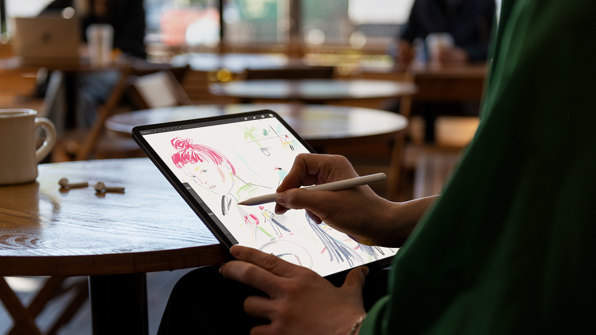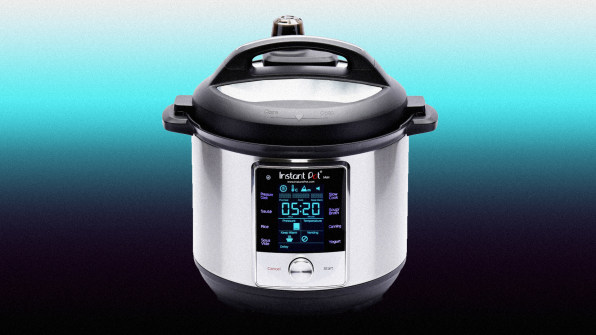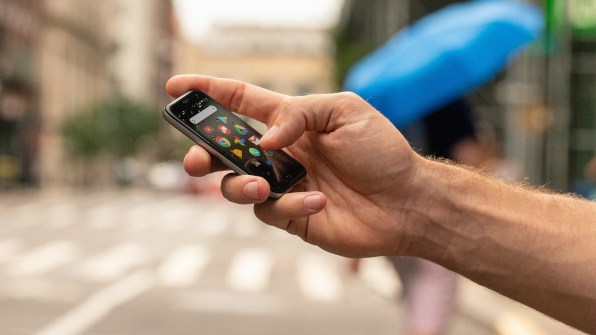The most innovative gadgets of 2018
1.THE MODERN-DAY PHOTO FRAME
Every day, Google Photos users collectively upload more than 1.2 billion pictures and videos for safekeeping. But once they’re up in the cloud, it’s hard to remember that they even exist.
That’s where the Google Home Hub comes in. Officially a “smart display” that can respond to Google Assistant voice commands, the Home Hub spends most of its time cycling through Google Photos on its 7-inch screen. All you have to do is decide which people should appear in the frame, and Google does the hard work of refreshing the screen with new pictures.
Although the Google Home Hub isn’t the first smart display of its kind, it’s the only one so far that omits a camera, so you might feel more comfortable putting it on your nightstand. It also has a clever “ambient” display mode that uses warmer screen tones in the evening and flips to a barely visible clock in the dark. The idea was to build something that feels less like an intrusive piece of technology and more like something you’d naturally have around–you know, like a picture frame.
$149 ($129 through December 24), Google
2.APPLE’S PENCIL, PERFECTED
🚀The original version of Apple’s Pencil pressure-sensitive stylus, which shipped with the first iPad Pro in 2015, was a wonderful tool for drawing and painting in a bevy of iPad art apps. But Apple didn’t give you any way to transport the stylus with your iPad, which meant that there was a pretty good chance you’d end up leaving it at home. If you didremember to tote it, its battery ran down quickly. And the ungainly way you recharged it—by removing a cap and sticking the stylus in the tablet’s Lightning port—was one of the least Apple-esque maneuvers ever associated with an Apple product.
🚀What a difference the new $129 Pencil—which is compatible only with Apple’s new iPad Pro models—makes. For transport, it snaps magnetically to the edge of the tablet, a trick Apple picked up from Microsoft’s Surface. The Pencil charges while it clings to the iPad Pro. That does away with the whole silly charging regimen of the previous Pencil. Bottom line: The odds that you’ll have a fully charged Pencil at your fingertips when you want it are now dramatically higher, which makes the whole concept much, much better.
🚀The new iPad Pro models are pretty sweet upgrades in other ways, too. Apple ditched the home button/Touch ID sensor in favor of Face ID, allowing it to shrink down the tablets’ bezels and fit more screen into less space. The company also gave these new models its monstrously powerful, AI-optimized A12X chip, ensuring that they can run existing apps as fast as possible—and opening up new possibilities for apps yet to come.
3.A MORE INSTANT INSTANT POT
🚀Chances are, you’ve at least heard of the Instant Pot—the counter top pressure cooker that went viral on Amazon a few years ago. If you’re yet to take the high-pressure plunge, the Instant Pot Max is the industrial-quality, idiot-proof way to get started.
🚀The Max is the first counter top pressure cooker to cook as fast as the pressure cookers you can buy for your stove. It also has the Instant Pot’s best interface to date, with a touch screen that lets you hop between sous vide and slow cooking in a second, and easily tweak all sorts of other settings. More importantly, the Max has a steam release valve that’s controlled electronically, rather than mechanically. That means you don’t need to sacrifice your fingers to an Old Faithful plume of steam every time you want to release the pressure on the cooker. You just hit a button, and the Max handles the rest.
🚀You can get a cheaper Instant Pot than the Max for sure—and if price is a concern, you should. But the Max is a more enjoyable, controllable, polished product than its predecessors. It feels like the Instant Pot has grown up.
$200, Instant Pot
4.DOLBY DOES HEADPHONES
🚀No brand is more associated with serious audio than Dolby. But its technologies have always been an ingredient in other companies’ gear—until now. With Dolby Dimension, a new pair of wireless headphones, Dolby is finally offering a consumer product of its own.
🚀Now, the world obviously didn’t need another set of Bluetooth headphones. And at $599, these ones aspire to reach the tippy-top of the mainstream market. But the Dimension ‘phones are no mere Bose or Beats wannabes. They’re optimized for listening inside the home, with a nifty storage base that keeps them fully charged when you’re not listening. Buttons on the right headphone cup let you switch between three gadgets—say, a TV, phone, and tablet—on the fly. And Dolby’s Life Mix technology melds noise cancellation with the ability to pump real-external audio into your ears on demand—say, if your spouse wants your attention—letting you choose just how how aggressively you want to tune out the world around you.
🚀Most importantly, the Dimension headphones sound (and feel) good, with a dimensionality that justifies their name. If the notion of watching a blockbuster movie on your giant-screen HDTV while listening to the soundtrack over headphones sounds ludicrous, you haven’t planted these on your noggin.
$600, Dolby
5.ONE SMALL VICTORY AGAINST SCREEN ADDICTION
🚀For years now, the trend in smartphone design has been inexorable: Bigger is better. But in 2018, many people are wondering if their immersive, large-screen phones were getting in the way of the pleasures of everyday analog living. Enter Palm, a startup which has borrowed the name of the once-mighty maker of personal digital assistants. Its namesake device runs Android apps and makes phone calls. But it’s proudly tiny, with a 3.3-inch screen that wouldn’t have looked particularly small a dozen years ago, but now feels positively Lilliputian.
🚀The Palm, a Verizon exclusive in the U.S., isn’t trying to wean you entirely off your bigphone, whose phone number it can share. But the idea is that you might be happier with something less attention-grabbing when you’re working out, spending time with loved ones, or otherwise engaged in activities that should get most of your focus. Along with its undersized dimensions, it reflects this philosophy in its software, which includes features such as a “Life Mode” that prevents unwanted notifications and calls from distracting you.
🚀At $350-plus a $10/month fee on your Verizon bill—the Palm isn’t for folks who are merely intrigued by the idea. Give its creators credit, though, for defiantly ignoring the conventional wisdom about what a pocket-sized communications device should strive to be. In a sea of largely similar smartphones, it’s a choice, not an echo.
$350, Palm








0 Comments